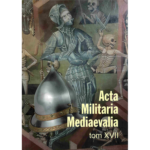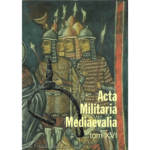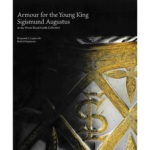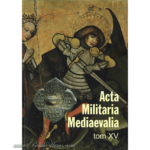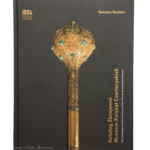
Blades with the Name and Pictures of Stephan Bathory
| ARTICLE | |
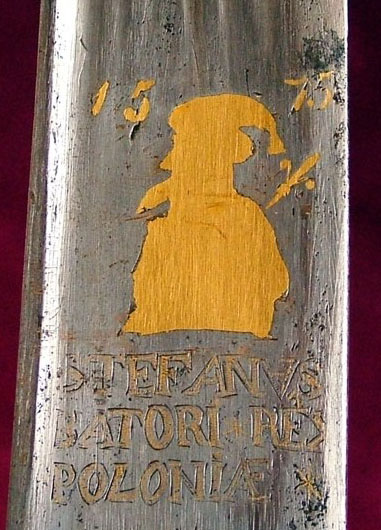 |
Blades with the Name and Pictures of Stephan Bathory, King of Poland KLINGEN MIT DEM NAMEN UND BILDNIS DES KÖNIGS STEPHAN BATHORY VON POLEN by Stanisław Meyer |
Below you’ll find short but very informative essay on Polish sabres with the pictures and inscriptions reffered to the famous Polish king and Grand Duke of Lithuania Stephan Bathory. These sabres are usually called “Batorowka” in Poland. The article was originally published in the “Zeitschrift fur Historische Waffen – und Kostumkunde”, 6. Band, Berlin 1937-1939, pages 54-57. It was written in German, so I tried to do my best to translate it into English. I’m sorry for any mistakes. If you read German you can find the original ariticle here and compare the content:
***
In all major weapons collections and in many museums in Poland and abroad one will find sabres and swords, which blades bears a bust of King Stephan Bathory. You can divide these blades in two different groups: the first, which bears the inscription “Stephanus Rex Poloniae”, and the second one where the first name is completed with the surname of “Bathory” (in very different spelling). In view of the generally accepted custom of the rulers to come with only first names, we must assume that only the first group dates from the reign of King (1576-1586).
Most existing blades with the first name of the king bear the following inscription: “Stephanus D. G. Rex Pol. D. Prus.” (Stephanus Dei Gratia Rex Poloniae Dux Prussia). We have found six blades in various national and international collections that all carry the same inscription with the same abbreviations and very similar decoration, namely: two blades in Warsaw – Army Museum, one in the collection of Count Krasiński in Warsaw, one in Berlin Arsenal (Inventory No. PC 14167), one in the Livrustkammaren in Stockholm (inv. 1850) and one commercially available in Warsaw. All these blades are decorated with trophies and contribute ornamentation other than the aforementioned words – the word “Frangia”( in different writings) and in one case the word “Genoa”.
It is interesting to observe that all six blades – apart from the equality of the inscription and ornamentation – are completely different. Some are of Italian origin, others seems to be of German work. It is noteworthy that the inscriptions put on all these blades refers to various titles of the king but only to the King of Poland and the Duke of Prussia, while the title of Grand Duke of Lithuania, usually placed in the second place in order, is omitted. We can find an analogy of these inscriptions on the coins, which were characteristic in Danzig (Gdańsk) at the time of King Stephan. Some of the coins have even the same abbreviations. Since this is the only case where we find the titling of the king in this form, it is assumed that these blades – regardless of how different they are – have been decorated and marked in Gdańsk.
It seems to be that King Stephan had a special favors for putting his image on weapons. This circumstance we owe the fact that relatively many blades are available with his name. The same tradition is also observed on blades from 17th century, and it began shortly after the death of the king. Everybody wanted to have arms bestowed by the King Stephan and show it off, thanks to the popularity of the king, who has been a very extraordinary person, whose legend was still alive in the beginning of the 18th century. As an expression of reverence for the great king, the knights have had his picture and his name etched into the blade. This was established after the death of the king, when blades usually born his family name what will assigned them to the above-mentioned second group. They preferably belong to the 17th century, mainly its first half. It is characteristic that blades of this group almost always bear a date, and we know those blades have the correct date of their creation. Most, however, are designated with an incorrect date, which oddly enough not fits to the time the rulres of King Stephan, very often one finds date of 1526! This date is also seen on blades, with the image and name of King Sigismund III, the successor of the king Bathory. It is obviously result of the scarce historical knowledge of the one who forged a blade.
The Bathory-blades of the second group, present in various arms collections, were usually manufactured in Poland: the most known is an Italian blade-smith, Joannes Hieronimus Caccia, active in the 17th century first in Krakow and then in Kielce.
It should be mentioned that on the blades of the first group, those who fall into the age of reign of King Stephan, the portraits and the decorations are usually etched or engraved; on the other hand, the inscriptions and the image on the later blades are almost always inlaid with gold.
In many earlier descriptions and catalogs one can find weapons that bearing the name of King Stephan Bathory, that are erroneously referred to as his property. The only sword, we can say about, with pretty high probability, that has belonged to the King Stephan, has no inscriptions at all. It is hard to imagine, that on king’s arms, any of his images, or his name – let alone his family name – could have been engraved. In the same way other blades with busts, names and initials of other kings as a form of worship of the monarchs are seen as a Polish tradition retained until the end of the 18th century. It is necessary to emphasize, that the names and pictures of kings has been quite often erroneously given as proof of their ownership and ipso facto regarded as a determination of the age of the weapons, what led many a collectors astray.
***
KLINGEN MIT DEM NAMEN UND BILDNIS DES KÖNIGS STEPHAN BATHORY VON POLEN
In allen größeren Waffensammlungen Polens und in vielen Museen im Auslande findet man Säbel und Schwerter, deren Klingen mit dem Brustbilde des Königs Stephan Bathory versehen sind. Man kann diese Klingen in zwei verschiedene Gruppen teilen: die erste, welche die Inschrift Stephanus Rex Poloniae trägt, und die zweite, wo außer dem Vornamen auch der Familienname Bathory (in sehr verschiedener Schreibweise) geprägt ist. In anbetracht der allgemein geltenden Gewohnheit, regierende Fürsten nur mit Vornamen zu bezeichnen, müssen wir annehmen, daß nur die erste Gruppe aus der Regierungszeit des Königs (1576-1586) stammt.
Die meisten vorhandenen Klingen mit dem Vornamen des Königs tragen folgende Inschrift: „Stepha nus D. G. Rex Pol. D. Prus” (Stephanus Dei Gratia Rex Poloniae Dux Prussiae). Wir haben sechs Klingen in verschiedenen In- und Auslandssammlungen gefunden, die alle dieselbe Inschrift mit denselben Abkürzungen und sehr ähnlichen Verzierungen tragen, und zwar: zwei Klingen im Warschauer Heeresmuseum, eine in der Sammlung der Grafen Krasinski in Warschau, eine im Berliner Zeughaus (Inv.- Nr. P. C. 14167), eine in der Livrustkammaren in Stockholm (Inv.-Nr. 1850) und eine im Handel in Warschau. Alle diese Klingen sind mit Trophäen-Ornamentation verziert und tragen außer der erwähnten Aufschrift noch das Wort „Frangia” (in verschiedener Schreibweise), und in einem Falle dazu noch das Wort „Genoa”.
Es ist interessant zu beobachten, daß alle sechs Klingen – abgesehen von der Gleichheit der Inschrift und Ornamentation – völlig voneinander abweichen. Einige sind italienischer Herkunft, die anderen wiederum deuten auf deutsche Arbeit. Es ist bemerkenswert, daß die Inschrift auf allen diesen Klingen von den verschiedenen Titeln des Königs nur den des Königs von Polen und des Herzogs von Preußen tragen, und daß der Titel des Großfürsten von Litauen, der in den meisten Akten an zweiter Stelle steht, ausgelassen ist. Eine Analogie dieser Inschrift finden wir auf den Münzen, die in Danzig zur Zeit des Königs Stephan geprägt wurden. Einige dieser Münzen weisen sogar dieselben Abkürzungen auf. Da dies der einzige Fall ist, wo wir die Titulierung des Königs in dieser Form finden, so ist zu vermuten, daß diese Klingen – unabhängig von ihrer verschiedenen Herstellungsart – in Danzig verziert und bezeichnet worden sind.
Es wird überliefert, der König Stephan habe als eine spezielle Gunst Waffen mit seinem Brustbilde verschenkt. Diesem Umstande verdanken wir es, daß verhältnismäßig so viele Klingen mit seinem Namen vorhanden sind. Auf dieselbe Tradition dürfte auch die Verfertigung von Klingen dieser XVII. Jahrhundert zurückzuführen sein, welche kurz nach dem Tode des Königs einsetzt. Alle wollten vom König Stephan geschenkte Waffen besitzen und damit prahlen; außerdem war die Volkstümlichkeit des Königs, der eine ganz außergewöhnliche Persönlichkeit gewesen ist, sehr groß und reichte bis in den Anfang des XVIII. Jahrhunderts hinein. Als Ausdruck dieser Pietät für den großen König haben die Ritter sein Bildnis und seinen Namen in die Klingen ätzen lassen. Diese nach dem Tode des Königs entstandenen Klingen tragen meistens auch seinen Familiennamen und gehören zu der obenerwähnten zweiten Gruppe. Sie gehören vorzugsweise dem XVII. Jahrhundert an, und zwar vorwiegend seiner ersten Hälfte. Es ist charakteristisch, daß Klingen dieser Gruppe fast immer irgend ein Datum tragen; wir kennen solche Klingen, die das richtige Datum ihrer Entstehung aufweisen. Die meisten indes sind mit einem falschen Datum bezeichnet, das merkwürdigerweise in die Zeit der Regierung des Königs Stephan nicht paßt; besonders häufig findet man das Jahr 1526 eingeschlagen. Dieses Datum kommt beiläufig auch auf Klingen vor, die mit dem Bildnis und Namen des Königs Siegmund III., des Nachfolgers des Königs Batlhory, geschmückt sind. Es ist offenbar auf die geringen historischen Kenntnisse der Klingenschmiede zurück zuführen.
Die Bathory-Klingen der zweiten Gruppe begegnen in Waffensammlungen besonders häufig; sie wurden auch vielfach in Polen verfertigt: ein italienischer Klingenschmied, Joannes Hieronimus Caccia, der zuerst in Krakau und alsdann in Kielce im XVII. Jahrhundert arbeitete, steht als Erzeuger der späteren Bathory-Klingen an der Spitze.
Es wäre noch zu erwähnen, daß auf den Klingen der ersten Gruppe, also denen, die in das Zeitalter des Königs Stephan fallen, das Bildnis und die Verzierungen meistens geätzt oder graviert sind: dagegen sind die Aufschriften und das Bild auf den späteren Klingen fast immer mit Gold tauschiert.
In vielen älteren Beschreibungen und Katalogen sind Waffen, die den Namen des Königs Stephan Bathory tragen, fälschlich als sein Eigentum bezeichnet. Der einzige Säbel, von dem man mit ziemlich großer Wahrscheinlichkeit behaupten kann, daß er dem König Stephan gehört hat, trägt überhaupt keine Aufschrift. Es ist auch kaum denkbar, daß ein König auf Waffen, die er zu seinem eigenen Gebrauch besitzt, sein Bild und seinen Namen – geschweige seinen Familiennamen – gravieren läßt. Denn in gleicher Weise sind Klingen mit Bildern, Namen und Monogrammen anderer Könige als eine Form von Verehrung des betreffenden Monarchen versehen, eine Sitte, die in Polen bis zum Ende des XVIII. Jahrhunderts beibehalten wurde. Es ist ausdrücklich zu betonen, daß die Namen und Bilder der Könige oftmals ganz irrtümlich als ein Beweis des Eigentums und ipso facto als eine Bestimmung des Zeitalters der Waffen galten und manch einen Sammler auf Irrwege führten.








